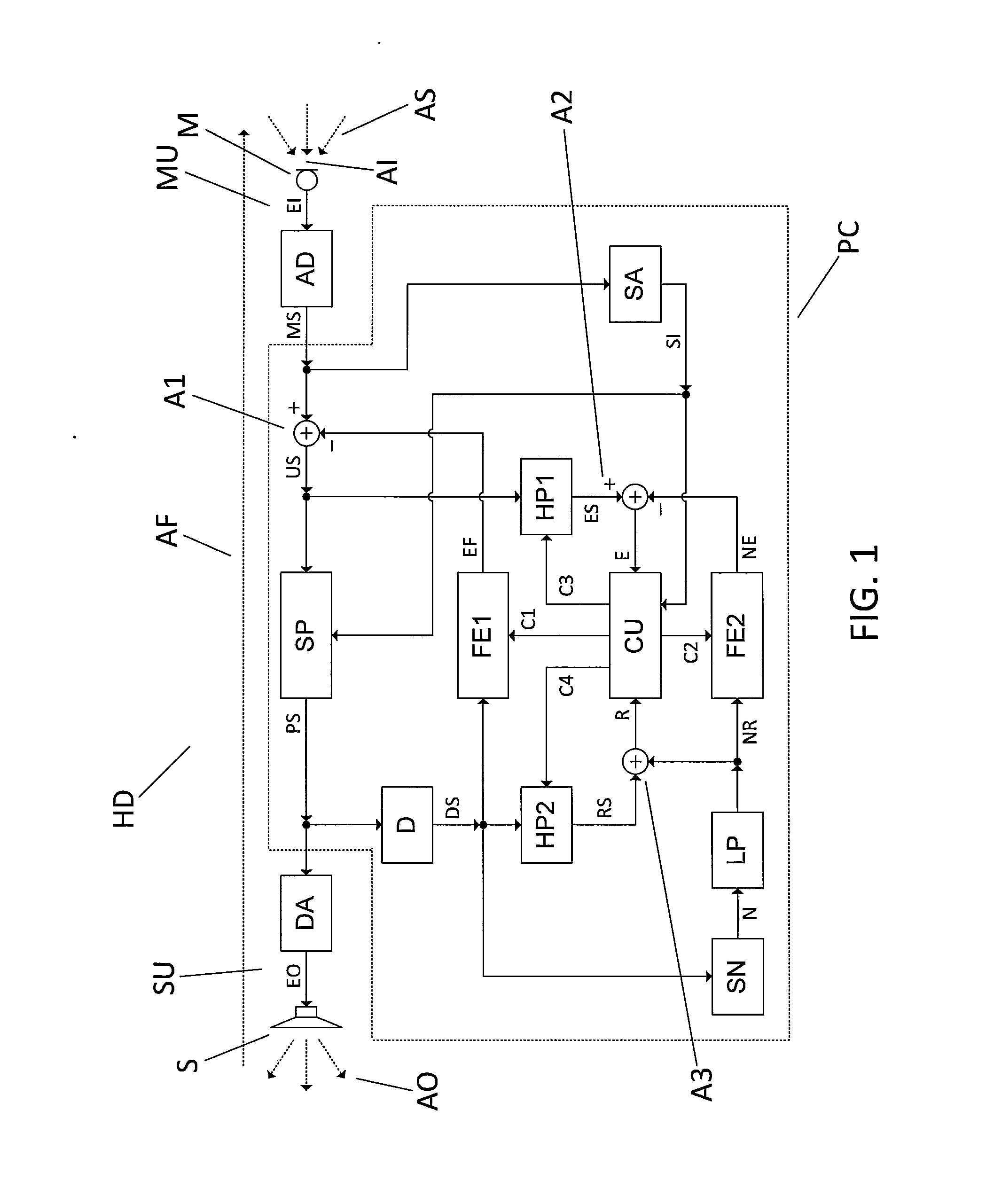Method for suppressing acoustic feedback in a hearing device and corresponding hearing device
a technology of acoustic feedback and a hearing device, applied in the direction of electrical transducers, signal processing, electrical apparatus, etc., can solve the problems of incorrect hf gain of adaptive filters, affecting the efficiency of adaptive filters, so as to achieve correct hf gain and reduce adaptability speed
- Summary
- Abstract
- Description
- Claims
- Application Information
AI Technical Summary
Benefits of technology
Problems solved by technology
Method used
Image
Examples
Embodiment Construction
[0014]FIG. 1 shows a first embodiment of a hearing device HD according to the invention. The hearing device HD comprises a microphone unit MU, processing circuitry PC and a speaker unit SU. The microphone unit MU comprises a microphone M and an analog-to-digital converter AD. The microphone M is arranged to receive an acoustic input signal AI comprising ambient sounds AS from the environment as well as acoustic feedback AF of an acoustic output signal AO and is adapted to convert the acoustic input signal AI into an electric input signal EI in analog form. The analog-to-digital-converter AD is connected to receive the electric input signal EI and is adapted to digitise the electric input signal EI as well as to provide the result as a microphone signal MS in digital form. The processing circuitry PC is connected to receive the microphone signal MS and is adapted to provide a processed signal PS. The speaker unit SU comprises a digital-to-analog converter DA and a speaker S. The digi...
PUM
 Login to View More
Login to View More Abstract
Description
Claims
Application Information
 Login to View More
Login to View More - R&D
- Intellectual Property
- Life Sciences
- Materials
- Tech Scout
- Unparalleled Data Quality
- Higher Quality Content
- 60% Fewer Hallucinations
Browse by: Latest US Patents, China's latest patents, Technical Efficacy Thesaurus, Application Domain, Technology Topic, Popular Technical Reports.
© 2025 PatSnap. All rights reserved.Legal|Privacy policy|Modern Slavery Act Transparency Statement|Sitemap|About US| Contact US: help@patsnap.com



